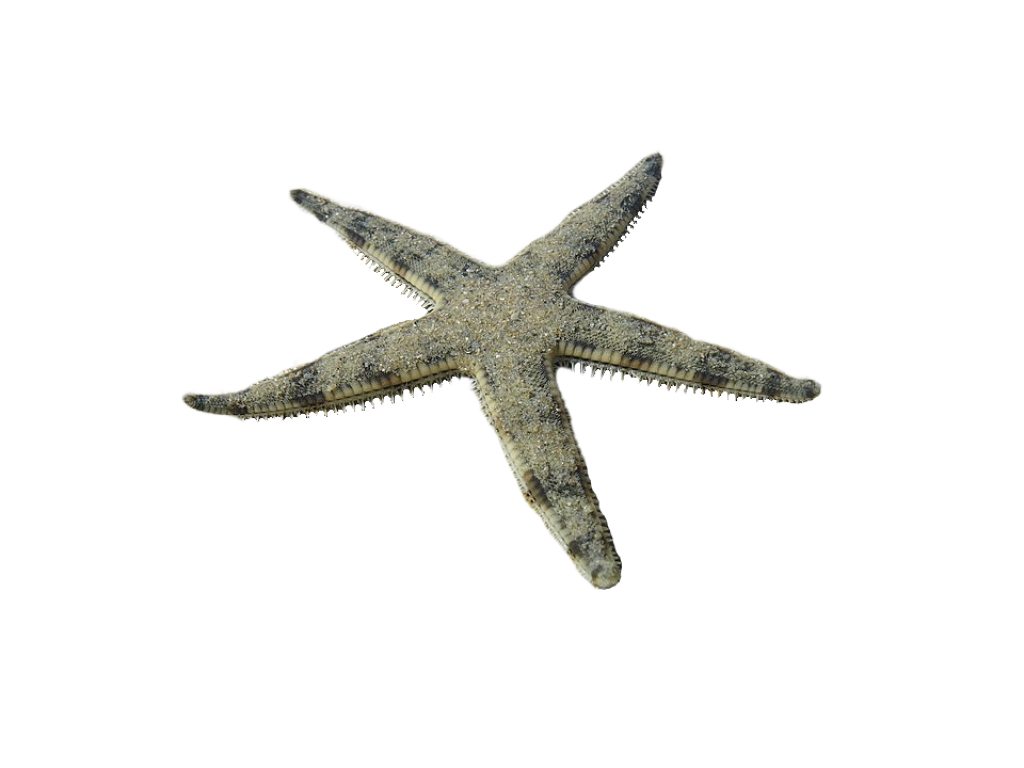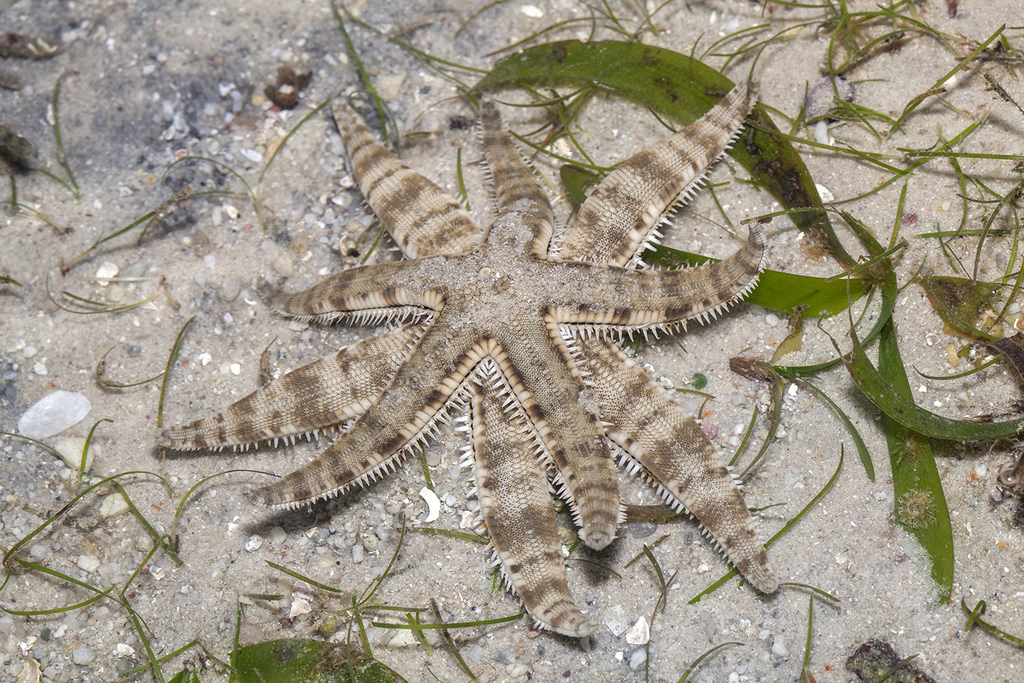Sand star
Archaster typicus

Eyes in arms and stomach on the outside of the body
When feeding, starfish wrap their arms around their prey, for instance a mussel, and pry it open. The digestive system of the starfish is simple, and the mouth is on its underside. When eating a larger catch, the starfish can eject its stomach outside its body to capture and even digest the prey, still with its stomach outside its body.
If any of the arms of the starfish are lost, a new one will grow out. At the end of each arm, the starfish has an eye. The eyes can distinguish differences in light. Each arm also has a gonad, which produces reproductive cells and sex hormones. Starfish do not have a centralised brain, but they do have an advanced nervous system and are sensitive to touch. The heart of a starfish beats only about six times a minute.

Photo: Anne-Hoggett-CC-BY
An echinoderm
Starfish belong to the phylum Echinodermata. There are 2,000 species in total, including sea urchins, brittle stars and starfish such as the sand star. The sand star usually have five arms, but may have more or fewer. They are often partially buried in the sand. The species has declined in numbers, and in the early 2000s a large number died off Singapore, due to habitat loss and excessive fishing.

Photo: budak-CC-BY-NC
The male lies on the back of the female for months
Most starfish reproduce by simply releasing eggs and sperm freely into the water, without any actual physical contact between the male and the female. But sand stars are a little different! The male, which is smaller than the female, seeks out a female during the mating season and lays on top of her. He can stay in that position for up to two months! When it’s time to mate, they wrap their arms around each other. Their genitals do not meet, but the male releases sperm and the female eggs, which are then fertilised freely in the water. The young grow up among sea grass and roots above the seabed, near sandy beaches.

Photo: budak-CC-BY-NC
Distribution worldwide
The Pacific.

Threat based on the Red List

Trade regulations
CITES: Not listed.